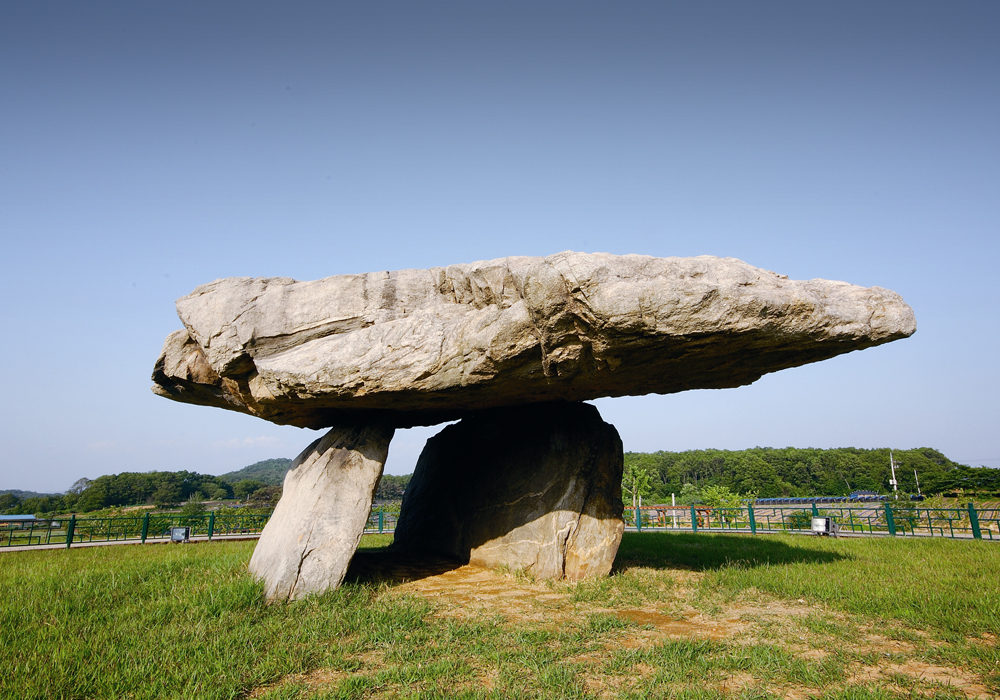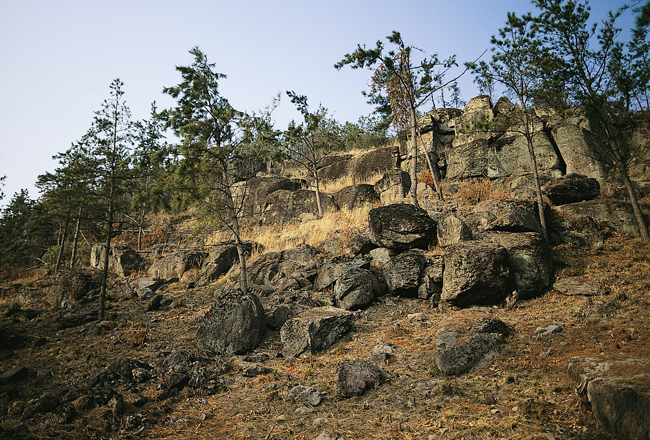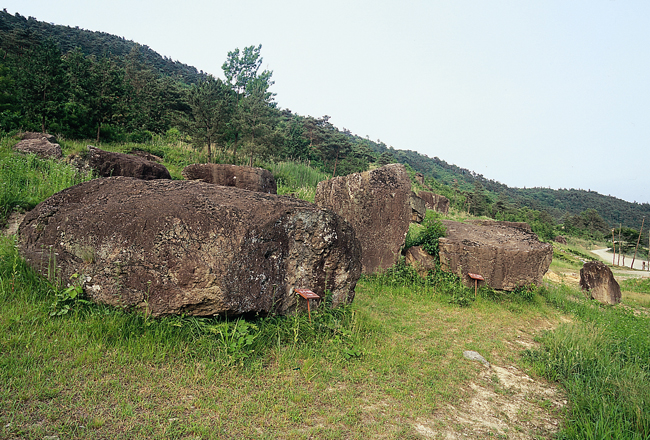Discover Korea's World Heritage
Gochang, Hwasun and Ganghwa Dolmen Sites
Dolmens on the Korean Peninsula
Dolmens in Gochang, Hwasun and Ganghwa show the funeral culture and rituals from the Bronze Age dating back to 1,000 B.C. They vividly manifest the prehistoric stonework techniques and social development.
Northeast Asia is one of the world’s largest dolmen-concentrated regions, with some 30,000 dolmens found in Korea, the center of the Megalithic culture.
Types of Dolmens
Dolmens come in three different types. In the so-called table type, a wide capstone is put on upright stone slabs. In the second type, small supporting stones are erected between an underground chamber and a huge capstone on the ground. The third type features an underground chamber covered with a capstone without supporting stones.
The three types are all found in Korea, varying in size. This shows that dolmens were made in different regions over time.
Source: Cultural Heritage Administration

Table type
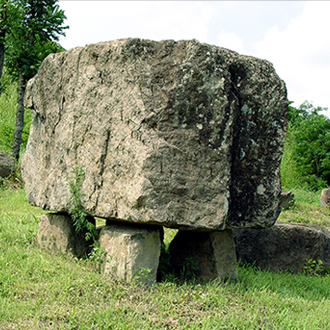
Go-board type
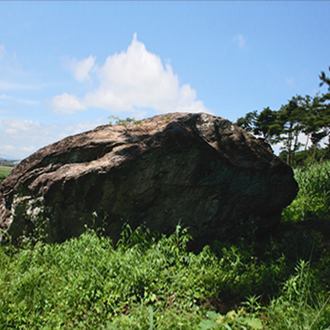
Capstone type
Dolmen Construction
First, stones are secured by finding proper stones or breaking large rocks. When splitting a rock, a deep groove is made in a small crack along the grain on the rock and a wooden stake is driven into the crack before being soaked in water. Several big logs are laid to move the stone split from the rock. The ground is dug up to set up the supporting stones, which will then be covered with a capstone. The body of the deceased and various grave goods are pushed into the space created between the supporting stones and the capstone. The space is sealed with a flat stone slab to finish the work.
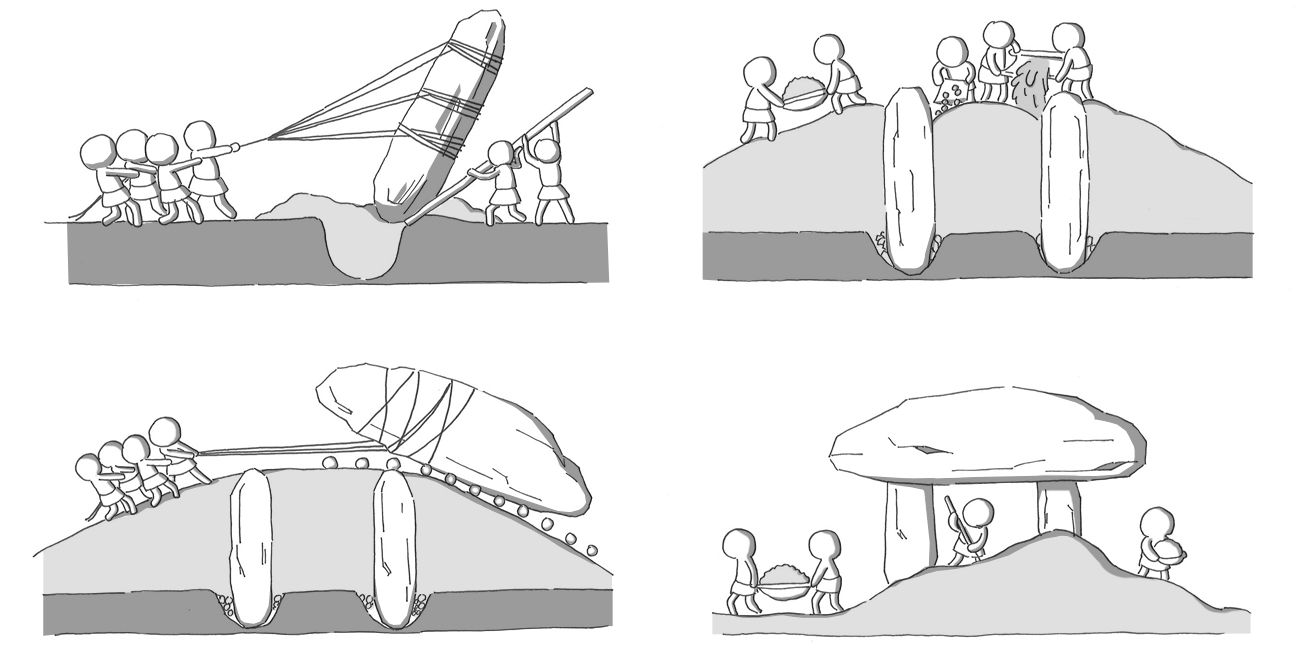
Gochang Dolmen Site
A total of 447 dolmens are scattered around Maesan Village, 1,764 meters across, east to west, in Jungnim-ri and Dosan-ri areas of Gochang County in North Jeollado Province. This is the largest cluster of dolmens in Korea.
Ranging in weight from under 10 tons to 300 tons, diverse types of dolmens are found in the area to provide a glimpse into how dolmens in Northeast Asia have evolved.
Source: Cultural Heritage Administration
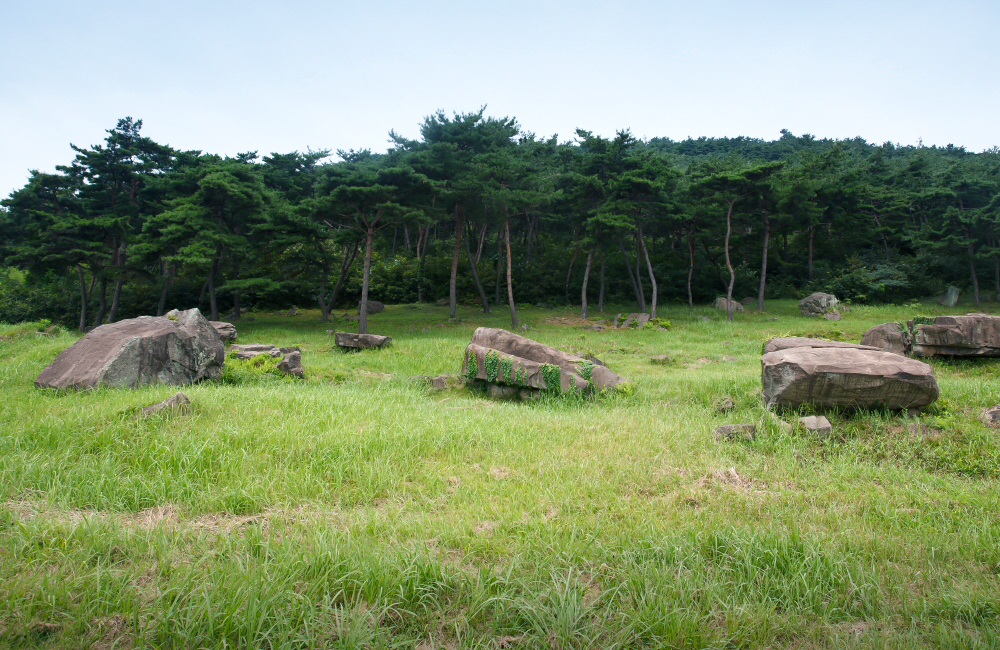
Hwasun Dolmen Site
A total of 596 dolmens (287 dolmens and 309 pieces assumed to be dolmens) are found in the area stretching about 10 kilometers in the valleys connecting Hyosan-ri, Dogok-myeon with Daesin-ri, Chunyang-myeon. Having recently been discovered, the relics are well preserved. A quarry has been discovered showing the process of making dolmens as well as stonework techniques and stone transportation methods of the old days.
Source: Cultural Heritage Administration
Quarry
Ganghwa Dolmen Site
Some 130 dolmens are found along the bottom of Mount Goryeo in Bugeun-ri, Samgeo-ri and Osang-ri regions. The largest table-type dolmen in Korea, measuring 3.35 meters in width, 2.47 meters in height and 0.65 meters in thickness, is in Ganghwa. Compared to dolmens found in other regions in Korea, most pieces here are situated at a relatively higher level at an elevation of 250~350 meters above sea level.
Source: Cultural Heritage Administration
